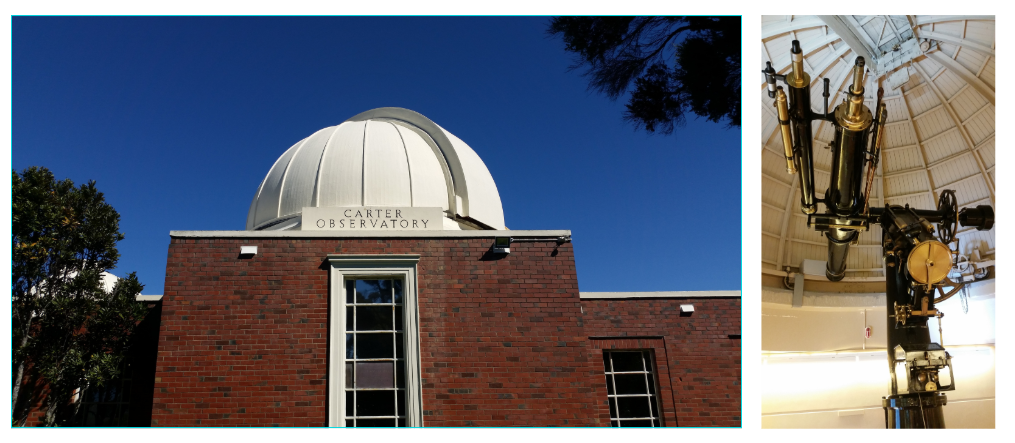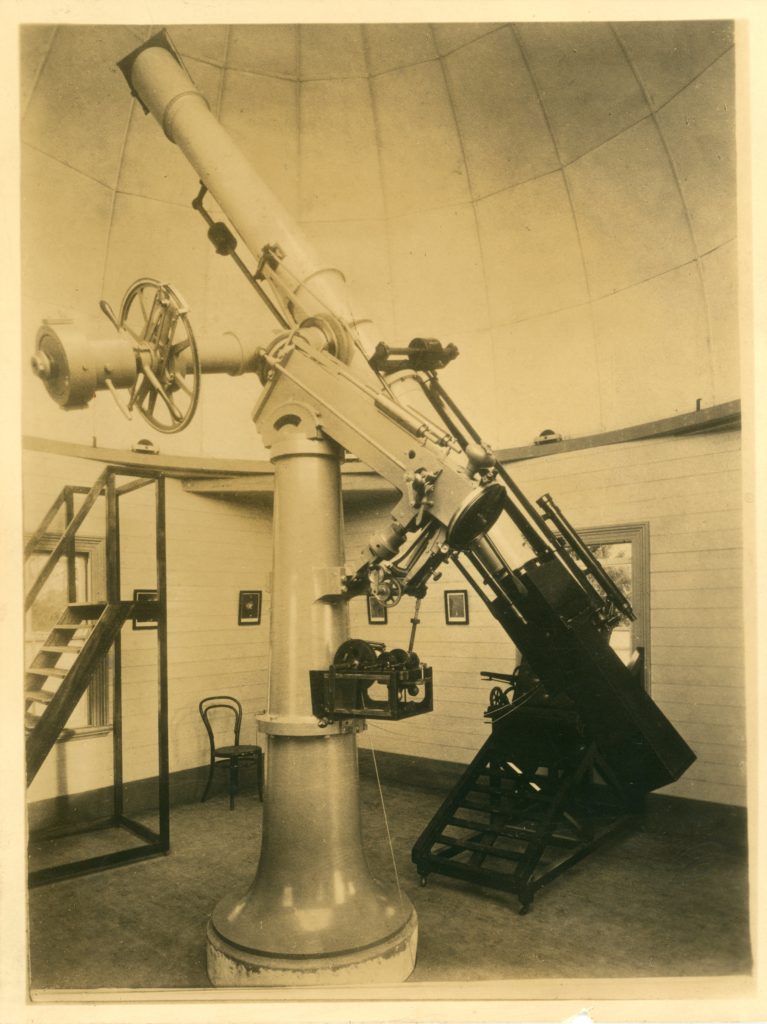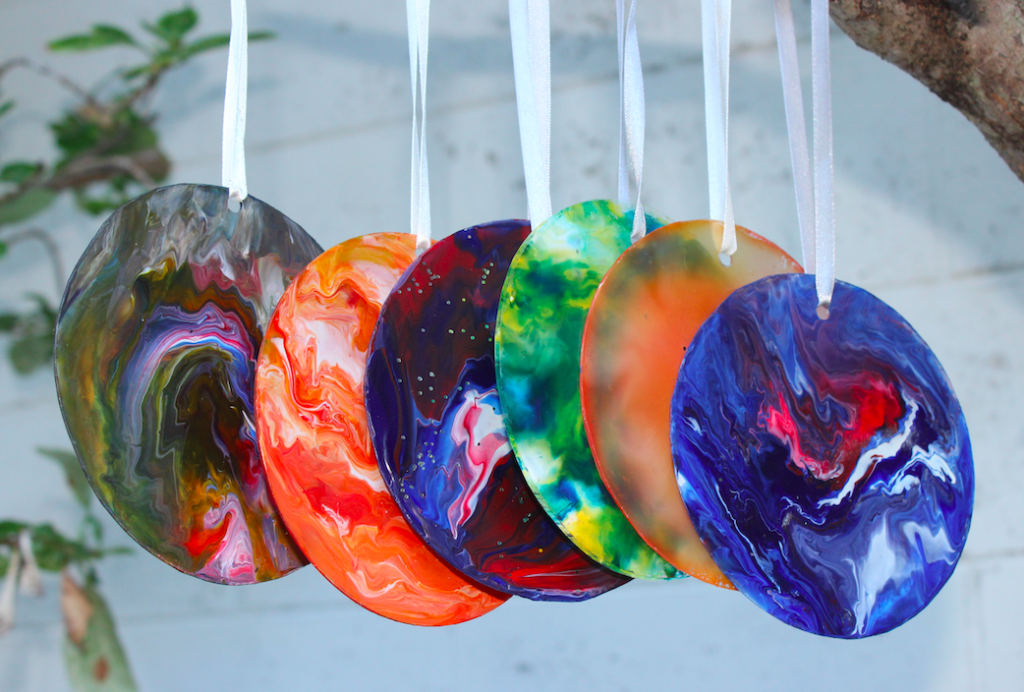By Rebecca John, Space Place Educator, Museums Wellington
Seeing the Light: Inspiring Science at Space Place
“It’s a galaxy – it’s a cell. Oh look, it’s the water bear!” Young voices rose and reverberated through the room as another school holiday programme unfolded this April at Space Place, Carter Observatory. Lenses and Light shone the spotlight on discovering macro and micro worlds, thanks to imagery captured by telescopes and microscopes. Inspired by the Semi-Conductor exhibition at City Gallery Wellington, young people challenged their observational skills from satellites and stars to microbes and minerals.
The day began with a starry vision in the full-dome planetarium. The film, We Are Astronomers, invited the children on a voyage into the night sky and beyond. Young viewers were transported around the world, joining astronomers’ quests to discover the mysteries of the universe: from Hawaii’s Mauna Kea observatory to NASA’s rocket launch pad in Florida and CERN’s Large Hadron Collider in Switzerland.

Image Credit: SPCarterObservatory
A visit to the Thomas Cooke Telescope housed at Space Place followed next. The refractor telescope uses lenses to focus on distant objects in the night sky. Originally manufactured in England in 1867 by T. Cooke & Sons, it was built for Edward Crossley, a wealthy industrialist with a passion for astronomy. In 1905, Reverend Dr. David Kennedy purchased and shipped it to the Meeanee Observatory near Napier. Purchased for £2000 by the Wellington City Council, in 1923 the telescope was moved yet again. The Thomas Cooke telescope has been based at Space Place, Carter Observatory since 1941. At present, the public can experience looking through this telescope on Tuesday, Friday and Saturday evenings, providing the weather is fine.

Image Credit: SPCarterObservatory
After exploring the interactive gallery space, the children were soon to discover the magic of light and the images they could create. Light rays danced on the table as they experimented with an assortment of convex and concave lenses. A chance to look through microscopes and telescopes further showed how lenses capture and focus light rays to then magnify the image for viewing. An exhibit of macro and micro visuals challenged viewers as to what they were looking at.

Top row left to right: Plagiomnium Affine Laminazellen, Celestial Official Hubble, DsDNA Antibodies. Middle row left to right: Jupiter Cylindrical Map, Pollen grains, Pleiades Bottom row left to right: Granite slice, Schmidt Martian Crater, Andromeda Galaxy References: Kristian Peters, NASA/ESA The Hubble Heritage Team, Image Credit: Simon Caulton, Frank Fox, NASA/JPL Space Science Institut, NASA, ESA, AURA, Caltech/Palomar, Observatory, Heiti Paves, Stekeisen, NASA, Adam Evans
Inspired by the visuals, the children then made sun-catchers as part of their arts and crafts activities. The goal was to re-create a macro or micro world as viewed through a telescope or microscope. Images of planets, stars, galaxies, minerals and cells came to life as paint was swirled and mixed to create the desired colours and patterns. Shining a light source or capturing sunrays behind the sun-catcher then brought the colours to life.

Top left clockwise: Galaxy, Io, Star, Granite, Sun, Stars Image Credits: R. John
While the sun-catchers were drying, the children were challenged to a treasure hunt in the gallery. The aim was to find tardigrades, otherwise known as water bears. With the astrobiology programme being further developed at Space Place, these sorts of microscopic creatures create excitement for potential life forms to exist on other planets and moons.

Image Credit: R. John
The water bear is an extremophile and can survive in extreme environments – from high and low temperatures and pressures to high doses of radiation. And if that is not enough, they are the first known animal to have survived in a vacuum of space for over a week. The water bear may be small (approximately 0.5mm in size), but it has a big endurance – and, so did the children in their quest to find the eight water bears hiding in the gallery.
I’m called a tardigrade or water bear
I live in places where you would fear
From icy mountains to deep seas
Look for water to find me please!
Your second clue will be a surprise
You have to look hard, I can disguise
I’m about one millimetre in size
And read library books to stay wise
I can survive days in outer space
Look through a lens to find my place
This telescope was built in 1867
To look far into the starry heaven

Image Credit: Frank Fox
The water bear was so popular that the children were keen to make their own, and another arts and crafts activity unfolded. Lenses and Light explored macro and micro worlds, and the art of science inspired young minds to remain curious and creative. Get ready for the launch of another action-packed holiday programme in July 2019. As we celebrate humanity’s journey to the Moon, we’ll be bringing the Moon to children in the July school holiday programme